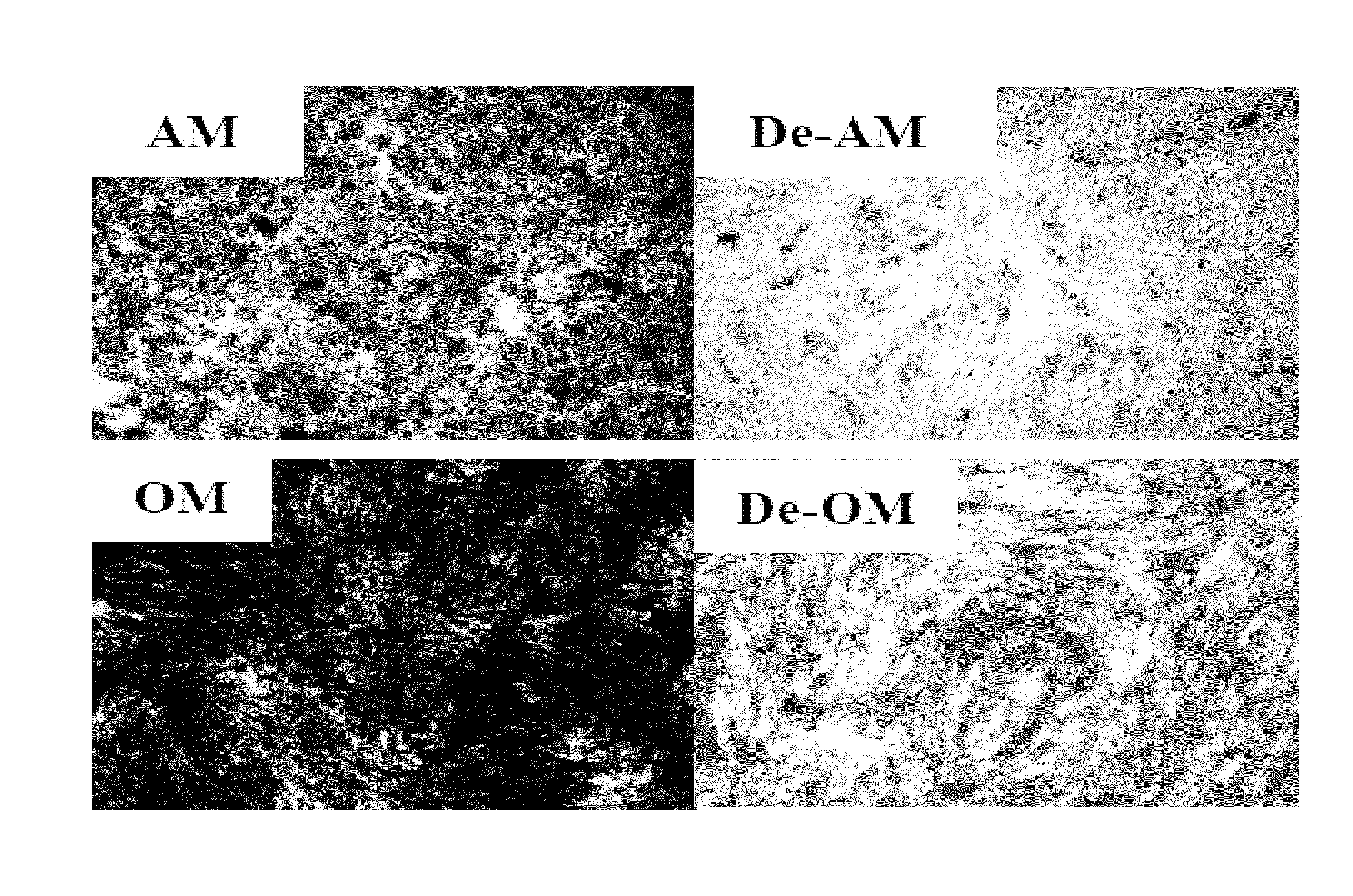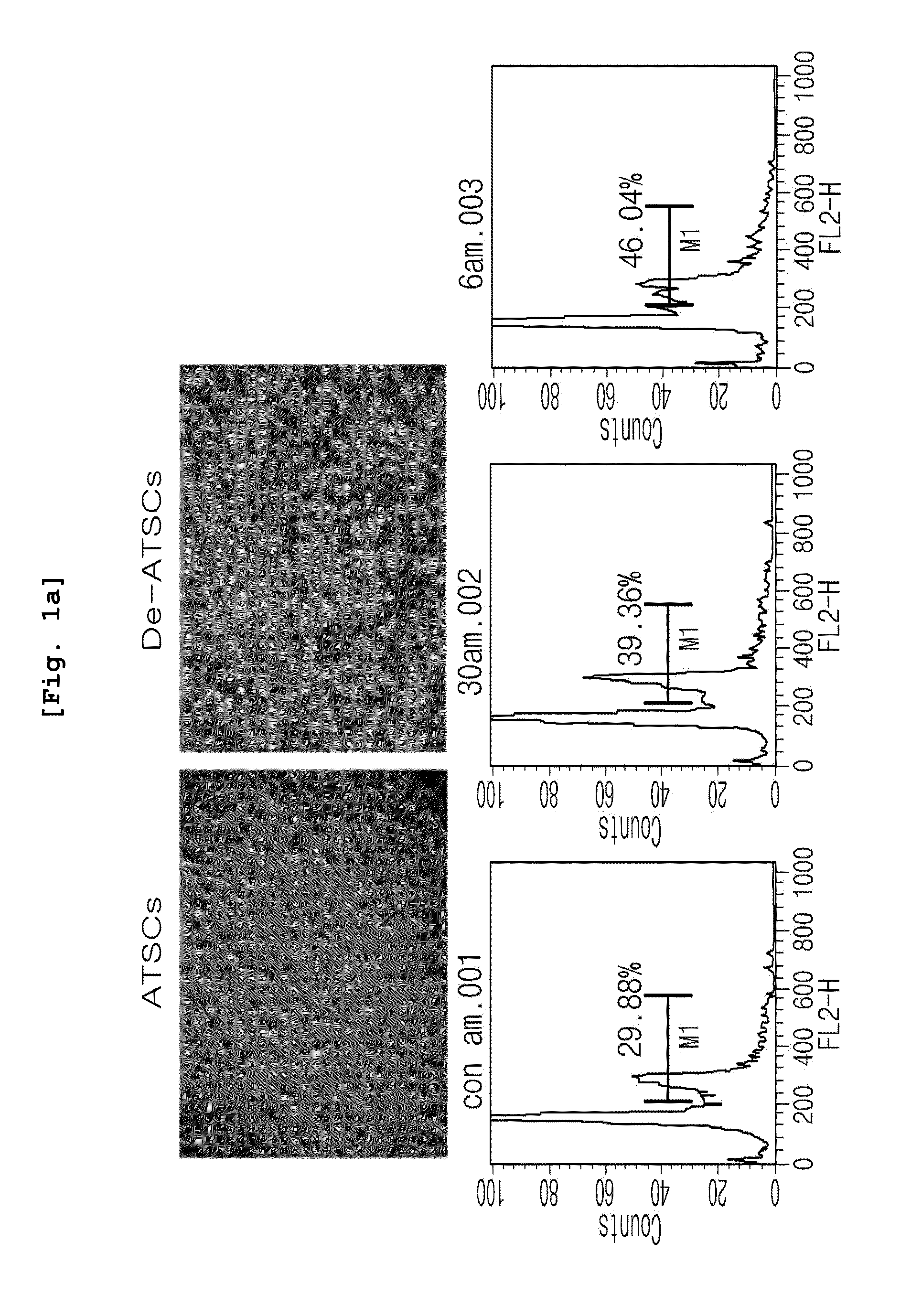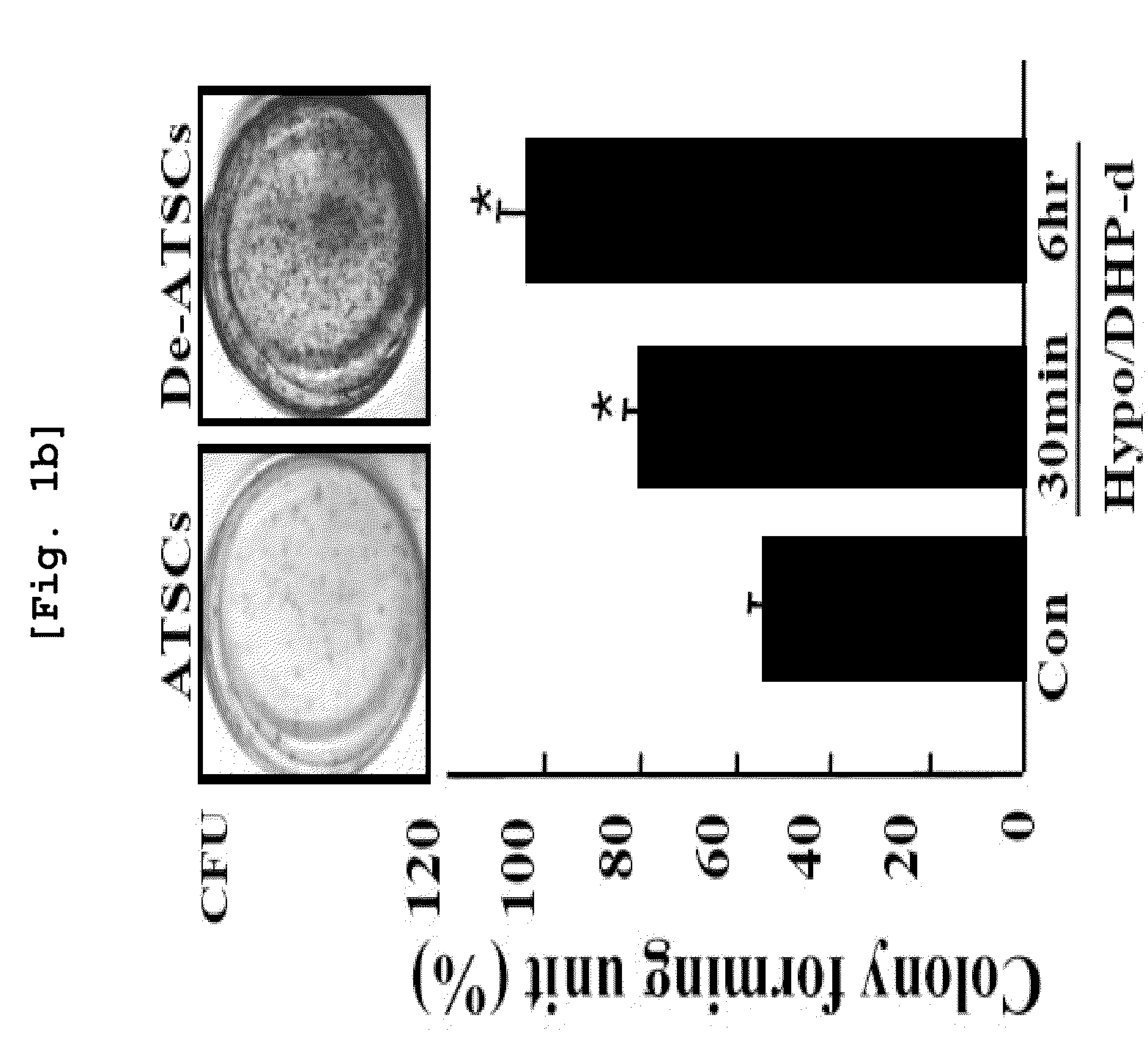Method for dedifferentiating adipose tissue stromal cells
a technology of stromal cells and adipose tissue, which is applied in the field of dedifferentiating somatic cells, can solve problems such as genome instability
- Summary
- Abstract
- Description
- Claims
- Application Information
AI Technical Summary
Benefits of technology
Problems solved by technology
Method used
Image
Examples
example 1
Inducing the Differentiation of ATSC by Treating Hypoxia / DHP-Derivative
Extracting DHP-Derivative
[0081]The purification process of 4-(3,4-Dihydroxy-phenyl)-derivative (DHP-derivative) will be explained. 4-(3,4-Dihydroxy-phenyl) (DHP) derivative purified from phellinus linteus, a medicinal fungus known as “Sang-hwang” in Korea for cell reprogramming. 1 kg of Phellinus linteus was grinded or cut into small pieces, and then soaked in 10 l of ethanol for 1 week, extracted and filtered to thus obtain 45 g in dry weight. Dried Phellinus linteus extract was mixed with the same amount of hexane and H2O and then suspended. From the extract, H2O layer was isolated, and then hexane extract was subjected to repeated silica gel (0.063-0.200 mm, Merck) column chromatography, using a hexane-ethyl acetate gradient as the eluting solvent to obtain ethyl acetate extract. Silica gel column chromatography was conducted with respect to 5.6 g of ethyl acetate extract to obtain 0.4 g of DHP-derivative fra...
example 2
Confirming Dedifferentiation of ATSC by Hypoxia / DHP-Derivative Treatment
[0085]To confirm the various dedifferentiating shapes of ATSC exposed to hypoxia / DHP-derivative treatment, the inventors conducted experiment.
Confirming Increased Proliferation of ATSC Cells by Hypoxia / DHP-Derivative Treatment
[0086]Once differentiating starts, cells are rarely proliferated since the cells are out of cell cycle. To confirm the dedifferentiation of ATSC by hypoxia / DHP-derivative treatment, cell proliferation activity of ATSC of Examples 1 to 3 were measured by flow cytometric analysis and colony forming units (CFU). Also, it was analyzed that such cell proliferation was caused by the increase of telomerase activity.
[0087]First, ATSC (experimental group) hypoxia / DHP-derivative, or ATSC (control group) treated with DHP-derivative were cultured to the full extent of 100 mm culture dish, and then upper layer of the medium was collected in 15 ml, of tube (Becton Dickinson, U.S.A.). Cells attached to t...
example 3
Confirming Dedifferentiation of ATSC Treated with DHP-Derivative and Hypoxia Stimulus by Karyotyping Analysis
[0099]Karyotyping analysis can only be conducted in proliferating cells. Since cancer cells are abnormally proliferated due to abnormal expression of genes such as absence or addition of chromosomes, the possibility is very high that there is no normal chromosomes in karyotyping analysis. Stem cells are active in proliferation like cancer cells but proliferate according to the cycle of normal cells, and therefore, have normal chromosomes. The karyotyping analysis was conducted to prove that ATSC treated with hypoxia / DHP-derivative were not turned into cancer cells but dedifferentiated. FIG. 4 illustrates the analyzing result of chromosomes separated from experimental or control group.
[0100]As a result, FIG. 4 indicates that both ATSC and dedifferentiated ATSC had normal chromosomes.
PUM
| Property | Measurement | Unit |
|---|---|---|
| extraction time | aaaaa | aaaaa |
| extraction time | aaaaa | aaaaa |
| extraction time | aaaaa | aaaaa |
Abstract
Description
Claims
Application Information
 Login to View More
Login to View More - R&D
- Intellectual Property
- Life Sciences
- Materials
- Tech Scout
- Unparalleled Data Quality
- Higher Quality Content
- 60% Fewer Hallucinations
Browse by: Latest US Patents, China's latest patents, Technical Efficacy Thesaurus, Application Domain, Technology Topic, Popular Technical Reports.
© 2025 PatSnap. All rights reserved.Legal|Privacy policy|Modern Slavery Act Transparency Statement|Sitemap|About US| Contact US: help@patsnap.com



